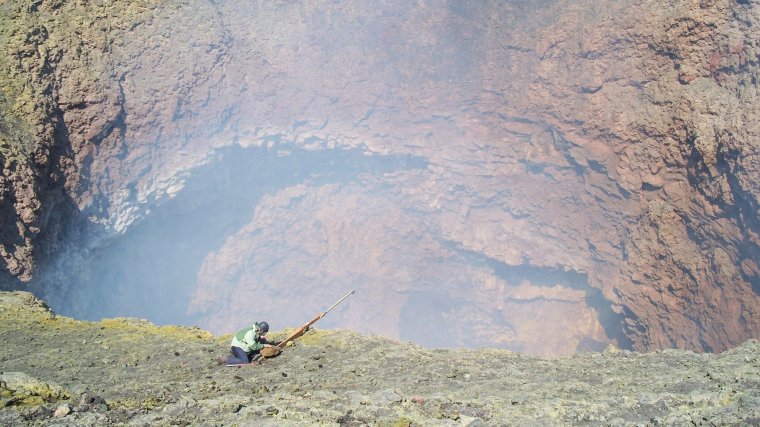| News / Science News |
Listen to the pulse of an erupting volcano
NSF | MARCH 13, 2015
Based on the characteristics of sound waves transmitted through the atmosphere, scientists can monitor and study the evolution of volcanoes right up until eruptions--and from a safe distance.

Geologist Jeff Johnson working in the inner crater of Villarrica. ![]()
At 3 a.m. on March 3, 2015, Villarrica, one of Chile's most active, blew its top in a spectacular fire fountain.
The geologist had deployed eight infrasound instruments near the volcano's crater. Another 22 instruments, placed farther from the summit, survived the eruption and recorded a unique data set.
The infrasound measurements he obtained during Villarrica's eruption are a sequence: a volcano as it evolves from a passive vent with a stable lava lake, to one with heightened activity that increased over a few weeks--and ended in dramatic fire.
The information tells a story of an explosive event that at its peak lasted approximately 30 minutes. Then Villarrica went back to sleep, its crater filled with a pool of slowly cooling lava.
YOU MAY ALSO LIKE




